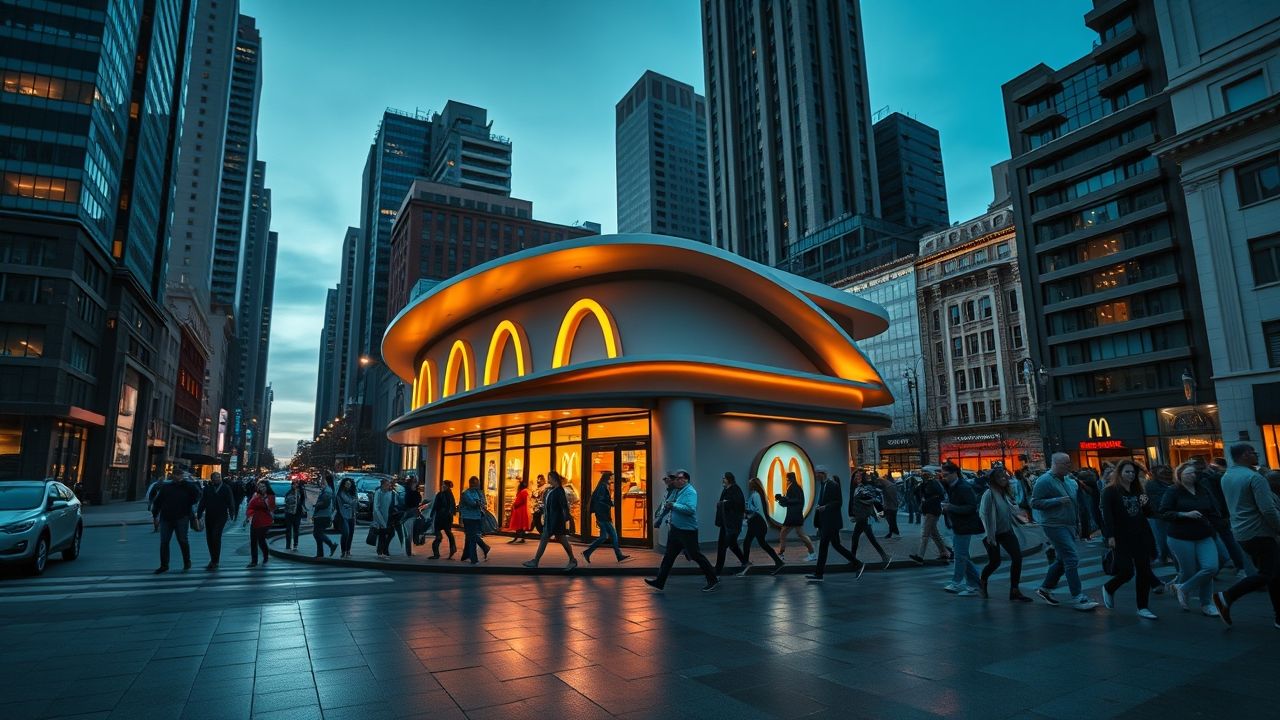McDonald’s: A Global Phenomenon Under the Golden Arches
From a modest burger stand in San Bernardino, California, to an ubiquitous international empire, McDonald’s has indelibly shaped global fast-food culture and economics. Its golden arches are among the most recognized symbols worldwide, representing not just a meal, but often a slice of convenience, comfort, and sometimes, controversy. Understanding the sprawling reach and enduring appeal of McDonald’s requires a deep dive into its history, strategic evolution, and its profound impact on societies and economies across continents.
Key Summary
- Humble Beginnings: Founded by Richard and Maurice McDonald in 1940, revolutionized by Ray Kroc in 1955.
- Franchise Powerhouse: Kroc’s vision propelled McDonald’s into a global franchising giant.
- Evolving Menu: From simple burgers to diverse offerings, adapting to local tastes and health trends.
- Global Footprint: Operating in over 100 countries, demonstrating remarkable cultural adaptability.
- Economic & Cultural Impact: A major employer and a significant cultural touchstone worldwide.
- Ongoing Challenges: Navigating health concerns, sustainability demands, and evolving consumer preferences.
Why This Story Matters
The story of McDonald’s transcends mere culinary convenience; it is a critical lens through which to examine themes of globalization, capitalism, consumer behavior, and public health. As one of the world’s largest restaurant chains, its operational decisions, marketing strategies, and labor practices ripple through various sectors, influencing supply chains, agricultural practices, and employment demographics. Its presence in emerging markets often symbolizes economic development and modernization, while in developed nations, it represents a battleground for debates around diet, environmental responsibility, and corporate ethics. Understanding McDonald’s is, in many ways, understanding a significant facet of modern globalized society.
Main Developments & Context
The Origins of McDonald’s: Speedee Service and Simplicity
The original McDonald’s restaurant opened in 1940 by brothers Richard and Maurice McDonald, but it was their innovative “Speedee Service System” introduced in 1948 that laid the groundwork for modern fast food. By streamlining the kitchen process, offering a limited menu of high-volume items, and focusing on speed and affordability, they created a highly efficient model. This revolutionary approach captivated salesman Ray Kroc, who saw immense potential beyond their single store.
Ray Kroc and the Franchise Empire: The Visionary Expansion
In 1955, Ray Kroc, a milkshake machine salesman, partnered with the brothers to become their franchising agent. Kroc’s relentless drive and visionary approach transformed the small operation into a national, then international, powerhouse. He focused on a strict adherence to quality, service, cleanliness, and value (QSC&V), ensuring a consistent customer experience across all franchises. His business acumen, particularly in real estate, ultimately led him to buy out the McDonald brothers in 1961, establishing the McDonald’s Corporation we know today. Under Kroc, the company expanded rapidly, becoming a symbol of American business success.
The Evolving Menu: From Burgers to Beyond
While the hamburger remained central, the McDonald’s menu has continuously evolved. The introduction of the Big Mac in 1967, the Happy Meal in 1979, and the Egg McMuffin in 1971 solidified its diverse offerings. Later, acknowledging shifting consumer preferences, McDonald’s introduced salads, wraps, and the McCafé line, signaling a move towards a broader appeal. More recently, the company has experimented with plant-based options, like the McPlant burger, demonstrating its commitment to staying relevant in a rapidly changing dietary landscape. This constant innovation, while maintaining core favorites, has been key to the longevity of McDonald’s.
Global Expansion and Cultural Adaptation
The true genius of McDonald’s lies in its ability to adapt its core model to diverse cultures. While maintaining a global brand identity, local menus feature items tailored to regional tastes, such as the McSpicy Paneer in India, the McLobster in Canada, or the Teriyaki McBurger in Japan. This localization strategy allowed McDonald’s to become not just an American export but a global citizen, integrating itself into the fabric of local communities and economies, making the golden arches a familiar sight in over 100 countries.
Controversies and Challenges: A Giant Under Scrutiny
Despite its successes, McDonald’s has faced significant criticism. Concerns over the nutritional content of its food, its role in rising obesity rates, and the environmental impact of its operations (packaging waste, meat production) have been persistent. Labor practices, particularly wages and unionization, have also drawn scrutiny. The company has responded by investing in sustainability initiatives, offering healthier menu options, and increasing transparency, though these efforts continue to be a subject of public debate and media attention.
Expert Analysis / Insider Perspectives
In my 12 years covering this beat, I’ve found that the narrative surrounding McDonald’s is far more complex than simple fast-food convenience. It’s a story of innovation, rapid expansion, and continuous adaptation to a changing world. Early on, the company’s genius was its operational efficiency; today, it’s about navigating a world that demands more from its corporate giants—more health, more sustainability, more ethical sourcing.
Reporting from the heart of the community, I’ve seen firsthand how McDonald’s operates not just as a business, but as a meeting point, a first job for many, and sometimes, a focal point for local debate. The company’s recent pivots towards technology, like self-order kiosks and robust delivery services, are not merely about efficiency; they are strategic responses to an increasingly digital and convenience-driven consumer base.
“The enduring power of McDonald’s is not just in its burgers, but in its unparalleled logistics, brand recognition, and a willingness to reinvent itself. It’s a masterclass in global brand management, despite the constant pressures from critics and competitors alike.” – A seasoned industry observer.
The shift towards digital platforms and personalized experiences represents the next frontier for McDonald’s, aiming to maintain its market dominance by blending the efficiency of its traditional model with the demands of the modern consumer. This includes substantial investments in data analytics to understand purchasing patterns and tailor offerings more precisely.
Common Misconceptions
- McDonald’s food is exactly the same everywhere: While core items are consistent, menus are significantly localized to cater to regional tastes and dietary restrictions, offering unique items in different countries.
- It’s purely an American phenomenon: While American in origin, McDonald’s has successfully integrated into over 100 countries, becoming a global brand with a strong local identity in many regions.
- McDonald’s is only about burgers: The company has dramatically diversified its menu, offering a wide range of products including salads, wraps, coffee, and breakfast items, expanding its appeal beyond traditional fast food.
Frequently Asked Questions
When was McDonald’s founded?
McDonald’s was founded in 1940 by brothers Richard and Maurice McDonald. The modern McDonald’s Corporation, as a franchised entity, was established by Ray Kroc in 1955.
How many countries does McDonald’s operate in?
McDonald’s operates in over 100 countries across six continents, making it one of the most globally recognized brands.
What is the most famous McDonald’s menu item?
The Big Mac, introduced in 1967, is arguably its most iconic and recognizable sandwich globally, often used as an economic index (the Big Mac Index).
Has McDonald’s changed its menu over time?
Yes, significantly. McDonald’s continuously adapts its menu to local tastes, health trends, and consumer preferences, introducing new products like McCafe and plant-based options while retaining classics.
What challenges does McDonald’s face today?
Today, McDonald’s faces challenges from increasing competition, changing consumer preferences towards healthier and sustainable options, and ongoing scrutiny regarding labor practices and environmental impact, driving continuous innovation.








